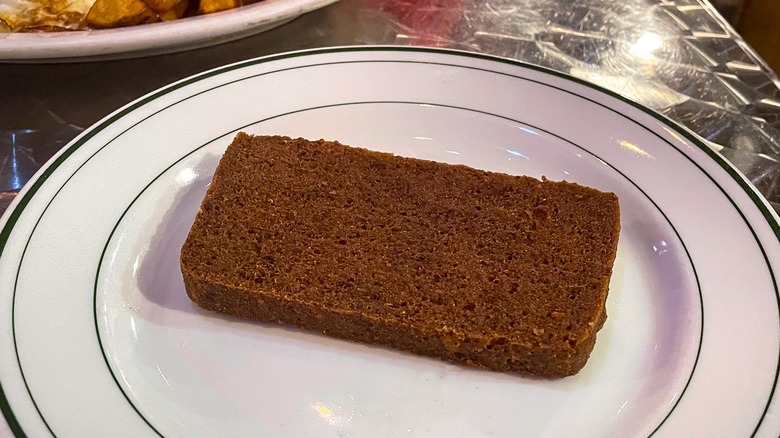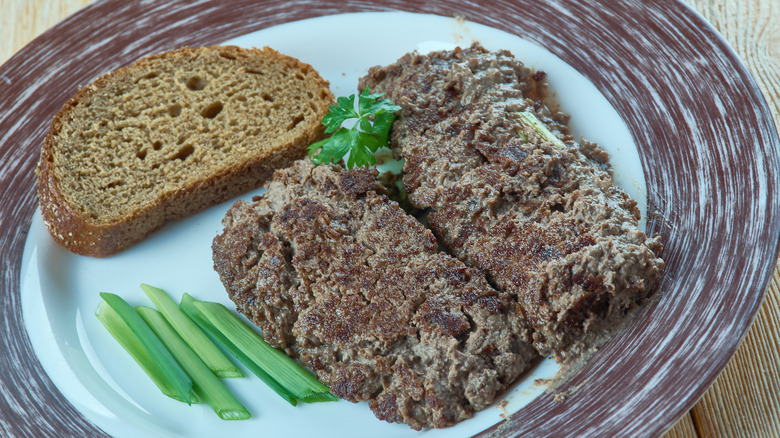Livermush: The Origins Of This Southern Delicacy, Explained
Unappetizing-sounding and unappealing-looking foods that are actually delicious are something of a Southern tradition — the hot brown sandwich from Kentucky may have an unappetizing name, but it's an incredible meal, and South Carolina's Frogmore stew is neither stew nor contains any frogs. But perhaps no food greater exemplifies this trend than livermush, a North Carolina treat that is ... well, kind of what it sounds like, but in a good way.
Simply put, livermush is liver, pig scraps (sometimes including head meat), seasonings, and cornmeal all mashed up together, then chilled before being cut into slices and fried. But it's not just a great way to use up whatever pig parts are left over, avoiding the food waste that would occur if you only ate choice cuts from the animal. Livermush also has a long, rich history, dating back as far as the 18th century, starting with German immigrants and eventually becoming part of the fabric of Carolina culture.
Livermush came to America with German immigrants
Livermush is similar in both taste and appearance to scrapple, which is no surprise, as both are products made of mashed-up pork offal combined with cornmeal as a binder. The key difference, though, is that livermush always contains liver — hence the name. Scrapple's ingredients are a bit more amorphous, coming down to what's available at the time, which may or may not include liver. But scrapple is much better known; there's even a festival dedicated to scrapple in Delaware.
Both, however, are descended from the same source: German immigrants who settled in Pennsylvania. In addition to scrapple, there's another similar food called "pon hoss" (from "pfanne haas," which translates as something like "pan rabbit"), only it involves buckwheat instead of cornmeal. From what food historians can see, pon hoss, which originated in the Rhineland, came with these Germans when they moved to America in significant numbers. When they got to Pennsylvania (where they were confusingly called "Pennsylvania Dutch" despite not being Dutch), pon hoss became scrapple. As more immigrants moved South from Pennsylvania into the burgeoning Carolinas, it changed again, eventually becoming livermush as cornmeal keeps better than buckwheat.
Livermush is really only popular in half the state
From there, livermush became an inextricable part of North Carolina cuisine, becoming particularly popular in both the Piedmont Triad and around Charlotte. It gained new life during the Great Depression, when it was a cheap protein alternative for many Carolinians who suddenly couldn't afford more traditional cuts of meat. This also led to its other name: "Poor man's páte."
Livermush's widespread popularity has waned somewhat since then. Interestingly, while it's still popular in the Western half of the state to this day, it's all but unheard of in North Carolina's Eastern half — although that region has "liver pudding," which isn't the same thing, as it's softer and made with flour instead of cornmeal. And it's less common now than it used to be, possibly because of the ready availability of more convenient breakfast foods. Whatever the case, as long as there are people who need cheap eats and aren't finicky about which parts of the animal they come from, livermush probably isn't going anywhere.


